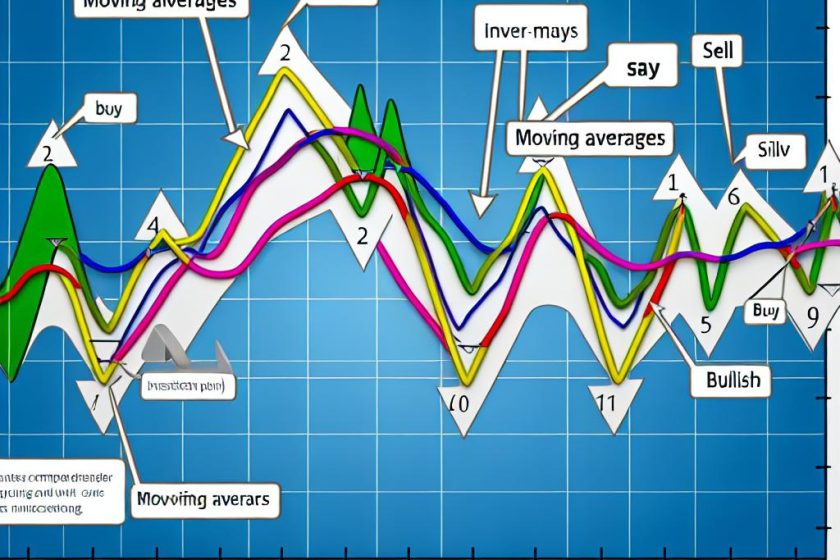How to Use Moving Averages in Commodity Trading
By : Admin -

Introduction to Moving Averages in Commodity Trading
Moving averages are essential tools in the field of commodity trading. They help traders to smooth out price data by creating a constantly updated average price, offering valuable insights into market trends. This mathematical calculation often serves as the foundation for various trading strategies.
Understanding Moving Averages
A moving average is a statistical calculation used to analyze data points by creating a series of averages of different subsets of the full data set. In commodity trading, these averages help traders identify potential buy and sell signals by observing price trends.
Types of Moving Averages
Several types of moving averages are commonly used in commodity trading:
Simple Moving Average (SMA): The SMA is the easiest to calculate and displays the average price of a commodity over a specific number of periods. It calculates the arithmetic mean of prices over the defined time frame. This straightforward approach makes it popular for its simplicity and reliability.
Exponential Moving Average (EMA): The EMA gives more weight to recent prices, making it more responsive to new information. By emphasizing more recent data, the EMA reacts faster to price changes compared to the SMA, allowing traders to spot emerging trends more effectively.
Importance of Moving Averages in Trading
Moving averages help traders recognize trend directions and potential reversals. They can highlight support and resistance levels and confirm trading signals when used alongside other indicators. The role of moving averages extends beyond simple calculations—by offering insights into the trending nature of markets, they become crucial components in trading systems. They can illustrate a trading instrument’s underlying strength or weakness in its price movement. Patterns and trends often reveal themselves when the noise of daily price fluctuations is smoothed out by moving averages.
Using Moving Averages in Trading Strategies
Traders apply moving averages in various strategies, often customizing them to match personal preferences or specific market conditions. Here are a few methods:
Crossover Strategy: In this method, traders use two different moving averages with varying lengths. A frequently employed technique is a short-term average crossing over a long-term average, which may indicate a potential buy signal. The opposite scenario could suggest a sell signal. This strategy capitalizes on a basic principle of trend interaction, where the short-term momentum can signal the start of a long-term trend when it crosses over longer averages.
Support and Resistance Levels: Traders use moving averages to identify support and resistance zones within the market. If a commodity price frequently bounces off a moving average line, traders might consider it a support or resistance level. These levels often signal potential points of reversal or continuation in commodity price trends and are used by traders for entry and exit decisions.
Adjusting Moving Averages for Market Conditions
Market conditions are dynamic and can change rapidly. Therefore, it’s essential for traders to adjust the periods and types of moving averages they use based on current market volatility and trends. Shorter periods are more sensitive and react quickly to price changes, while longer periods are smoother and provide a better view of overall trends. Adapting moving averages to the unique conditions of the commodity being traded ensures that the analysis is tailored for more precise forecasting and decision-making.
Combining Indicators: Moving averages work best when used in conjunction with other indicators. Combining them with tools like the Relative Strength Index (RSI) or the Moving Average Convergence Divergence (MACD) can enhance the accuracy of trade signals. Synergizing moving averages with other analytical tools adds additional layers of validation to trades, potentially increasing the probability of successful outcomes.
Conclusion
Using moving averages in commodity trading provides a clearer picture of market trends and helps traders make informed decisions. While they do not guarantee success, when used correctly and combined with other analysis tools, they can significantly enhance a trader’s strategy. Adjusting the parameters to align with market conditions and integrating additional analyses can help traders leverage moving averages effectively. Commodities trading is inherently risky, involving volatile markets that fluctuate due to various factors such as economic data, geopolitical developments, and supply-demand dynamics. Moving averages, being adaptable yet insightful indicators, help navigate these complexities. They portray trends over set time frames, smoothing out erratic price movements and displaying clearer patterns for traders. Thus, adopting moving averages means traders can reduce the noise in pricing data, aiding in the determination of viable entry and exit points.
Moreover, transitioning between different types of moving averages (like incorporating EMAs along with SMAs) offers deeper insights into the recent strength of market trends, presenting a more nuanced view than using a single type exclusively. By also coupling averages with other market indicators, traders can confirm their strategies or explore divergences in analysis that may suggest an adjustment in position.
Ultimately, moving averages serve as crucial components in the arsenal of commodity traders. They are a versatile toolkit element that, when used judiciously, contributes to more structured, evidence-based trading strategies and decision-making frameworks that can help traders achieve their financial goals more systematically.
This article was last updated on: April 4, 2025